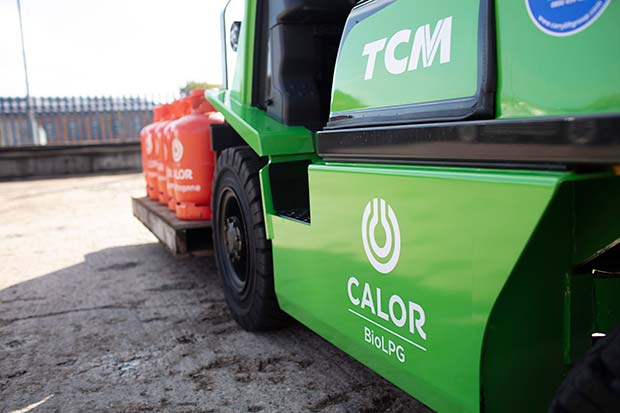Calor’s Lowering the carbon emissions of forklift trucks: An industry survey report, revealed there are operational, financial, and technological factors that significantly affect business’ decisions to be more renewable with their FLT fleets. Andy Kellett, National Accounts Manager for FLTs at Calor, looks at the barriers felt by decision makers in their efforts to operate FLTs more sustainably, and opportunities offered by making a switch to LPG or BioLPG.
 The UK’s ambitious net zero carbon target has brought into focus the need to make carbon savings. And an overwhelming 95% of those surveyed in the report felt that much more can be done to lower their carbon emissions. However, reducing the carbon footprint whilst remaining cost-effective and operationally efficient in such a competitive sector is no easy task.
The UK’s ambitious net zero carbon target has brought into focus the need to make carbon savings. And an overwhelming 95% of those surveyed in the report felt that much more can be done to lower their carbon emissions. However, reducing the carbon footprint whilst remaining cost-effective and operationally efficient in such a competitive sector is no easy task.
Clear financial incentives for developing, introducing, and using more efficient, low carbon emission solutions would be welcomed by many. This view is backed by 30% of the industry who in the survey say they believe that businesses should receive tax breaks if they can demonstrate annual carbon reduction achievements.
Electric limitations
The decision to ‘go electric’ with an FLT fleet amongst those surveyed was underpinned by operational requirements and suitability to the application in hand, which is why adoption is markedly different between industries and regions. Torque, heavy lifting, outdoor operations, and the availability of a robust electric supply were cited as concerns for adopting an electric fleet and over 85% of respondents stated that reducing downtime to a minimum is critical to their business and FLT selection.
The BioLPG Opportunity
As BioLPG is a renewable fuel made from a blend of waste, residues, and sustainably sourced materials, it can bring carbon savings of up to 32% achieved by using a mix of 40% BioLPG and 60% conventional LPG, compared to using conventional LPG alone[2] .
Additionally, to provide certainty of the amount of C02 savings made, Calor works with the Green Gas Certification Scheme (GGCS) to deliver Renewable Gas Guarantees of Origin (RGGO) documentation to customers using its BioLPG tariff, which can be used when auditing environmental impact.
Where performance is important, travel speeds, rate of acceleration and lift speeds are often superior to electric counterparts, and for those already running LPG FLTs, there is no additional investment or change of infrastructure required to move to sustainable BioLPG, because it is a drop-in fuel.
As part of its commitment to supply 100% renewable energy by 2040, Calor is taking steps to encourage the switch of all its FLT customers over to its BioLPG tariff, and with industry collaboration and government backing, the use of sustainable fuels to power FLTs can play a greater part in achieving the net zero carbon target.
To read the full report, please visit: www.calor.co.uk/fltreport
1 On behalf of Calor, Censuswide interviewed 101 randomly selected decision-makers and managers who are responsible for purchasing forklift trucks and their fuel, across the UK, in October 2019. Participants worked in various sectors including logistics and warehousing, retail, manufacturing and healthcare, and the sizes of their companies ranged from firms with less than 50 employees to those with over 500. Censuswide complies with the MRS Code of Conduct and ESOMAR principles.
2 Emissions saving compared to conventional LPG based on allocation of 40% BioLPG and 60% conventional LPG. Atlantic Consulting 2017.




Comments are closed.